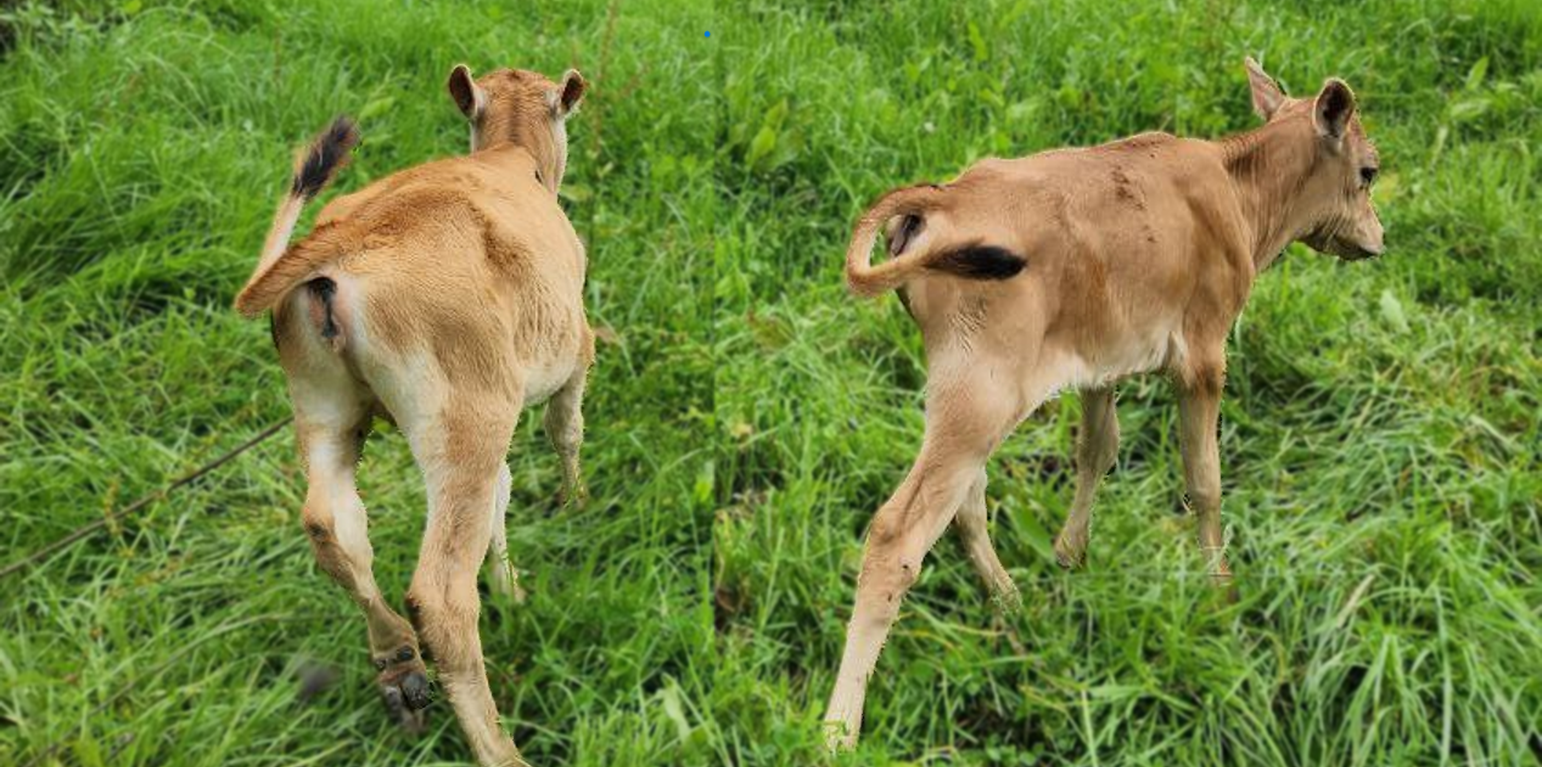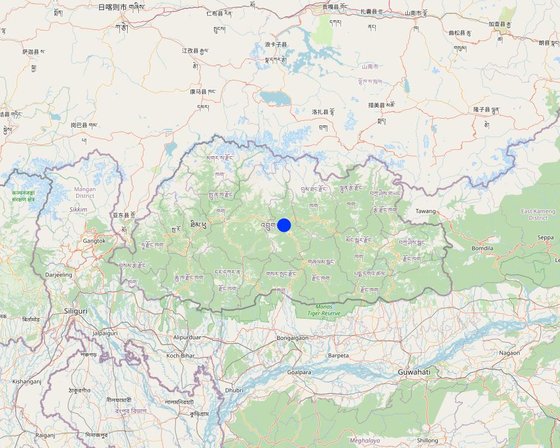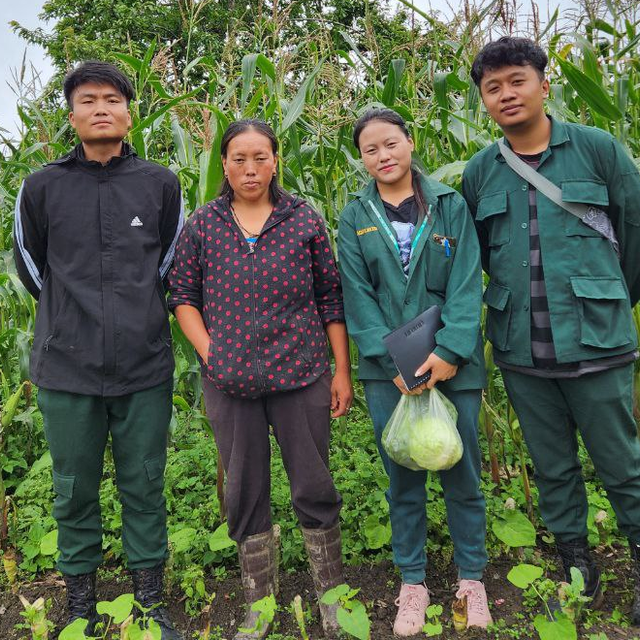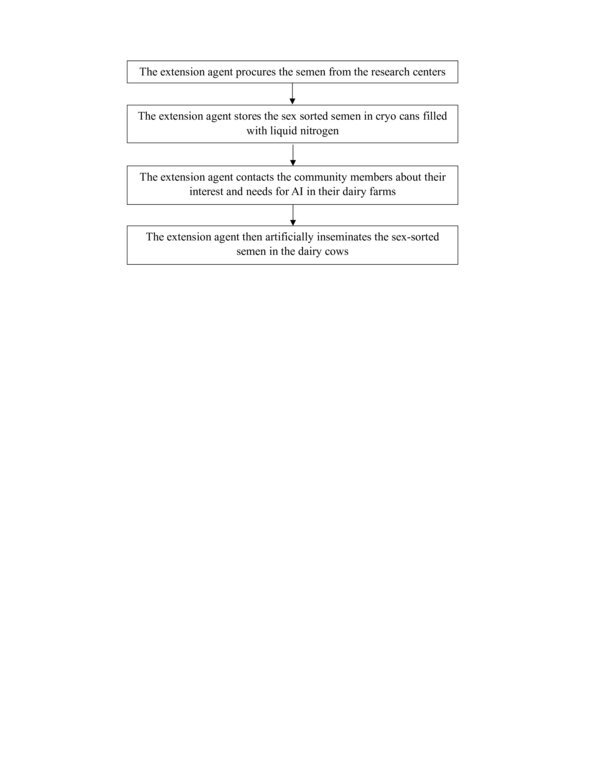



The Artificial Insemination (AI) program, initiated in 1987, has helped AI evolve into a widespread practice for dairy farms across Bhutan, with increasing accessibility due to improved road and transportation networks. The surge in demand for dairy products has positioned AI technology as key in transforming dairy farms from subsistence to market-oriented production systems.
A recent addition to the programme is the use of sexed semen, meaning sorting of semen before artificial insemination. Semen sorting involves categorizing bull semen based on the X and Y chromosomes, thus granting dairy land users control over calf gender. This empowers them to engage in selective breeding, enhancing desired traits and overall quality of dairy production.
Several key activities are integral to this technology:
•Rigorous selection of bulls with desirable traits related to milk production and overall health.
•Collection and preservation of semen from selected bulls.
•Semen sorting technology to separate X and Y chromosome-bearing sperm.
•Artificial insemination of dairy cows by extension agents who use sorted semen.
The benefits are multiple because achieving a higher proportion of heifer calves helps dairy land users to enhance breeding strategies and maintain desired traits within the herd. Economic benefits follow through increased dairy production and improved cattle health.
Land users express satisfaction with the technology and its impact. However, some households report problems with conception rates after AI with sexed semen. Despite these drawbacks, the overall benefits to dairy land users and the industry outweigh the limitations.

Lugar: Tshangkha, Tangsibji, Trongsa, Bután
No. de sitios de Tecnología analizados: un solo sitio
Difusión de la Tecnología: aplicada en puntos específicos/ concentrada en un área pequeña
¿En un área de protección permanente?: No
Fecha de la implementación: 10-50 años atrás
Tipo de introducción







| Especifique insumo | Unidad | Cantidad | Costos por unidad (Ngultrum) | Costos totales por insumo (Ngultrum) | % de los costos cubiertos por los usuarios de las tierras |
| Mano de obra | |||||
| Community AI Technician | person/Day | 2,0 | 1000,0 | 2000,0 | |
| Equipo | |||||
| Sexed semen AI | per straw | 1,0 | 1500,0 | 1500,0 | |
| golves | No | 1,0 | 5,0 | 5,0 | |
| AI sheath | No | 1,0 | 16,0 | 16,0 | |
| LN2 | litre | 300,0 | 35,0 | 10500,0 | |
| LN2 container (55 litre) | No | 2,0 | 25050,0 | 50100,0 | |
| Portable AI container (5 litres) | No | 1,0 | 11200,0 | 11200,0 | |
| Water boiler (3 litres) | No | 1,0 | 2800,0 | 2800,0 | |
| Jug | No | 1,0 | 30,0 | 30,0 | |
| Material para plantas | |||||
| Funnel | No | 1,0 | 150,0 | 150,0 | |
| Towel | No | 1,0 | 100,0 | 100,0 | |
| Flexible Dip stick | No | 1,0 | 2500,0 | 2500,0 | |
| Material de construcción | |||||
| AI crates | No | 1,0 | 45000,0 | 45000,0 | |
| Otros | |||||
| Travel | km | 15,0 | 30,0 | 450,0 | |
| Costos totales para establecer la Tecnología | 126'351.0 | ||||
| Costos totales para establecer la Tecnología en USD | 1'586.93 | ||||
Cantidad antes de MST: The cattle were normally grazed in the forest, so no fodder were produced.
Cantidad luego de MST: Some of the land that were left fallowed were used for fodder production.
Cantidad antes de MST: Local cattles can feed on wild fodder grasses and trees
Cantidad luego de MST: Improved cattles require quality fodder so they started growing improved fodders species like Super Napier grass, Napier grass, etc.
Cantidad antes de MST: 5 liters of milk were produced from each dairy cow every day
Cantidad luego de MST: 15 liters of milk are produced by each dairy cow everyday
The quantification was based on the amount of milk produced.
Cantidad antes de MST: 5 acres of cultivated land
Cantidad luego de MST: 1 acre of cultivated land
The land user now focuses mostly on dairy production and has converted some of the lands into pasture for grazing purposes while the rest has been left fallow. This is due to the absence of labour in the household.
This is due to the decrease in the cultivated land.
Due to the increase in dairy production, the land user is greatly benefited from it.
Since the land user focuses primarily on dairy, the amount of workload has relatively increased compared to the past, where she would only focus on agriculture, only.
Cantidad antes de MST: Mostly consumed food they produced in their household.
Cantidad luego de MST: Diverse food products are available, together with dairy products.
Cantidad antes de MST: Maize, wheat and potatoes were the only primary crops grown.
Cantidad luego de MST: Maize, wheat, potatoes and several other cole crops and legumes are now cultivated by the land users.
Cantidad antes de MST: more than 30 cattles including dairy cows and bulls
Cantidad luego de MST: around 15 dairy cows
There is decrease in the number of cattle and they are mostly female.